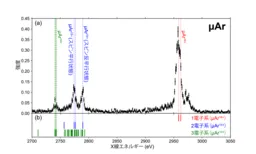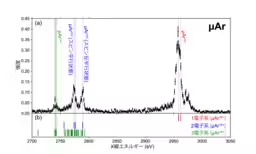

Success in Observing Exotic Atoms: Multi-Charged Muon Ions and Their Implications
Advances in Exotic Atomic Research: Multi-Charged Muon Ions
Researchers from Tokyo Metropolitan University and RIKEN have achieved a significant milestone by successfully observing a new type of exotic atomic system known as multi-charged muon ions. This groundbreaking observation was made possible through the use of the advanced Transition-Edge Sensor (TES) X-ray detector.
Context of the Research
Multi-charged muon ions are atomic systems where a nucleus binds a few electrons alongside negatively charged particles called muons. The existence of such ions was theoretically predicted, yet this marks the first time they’ve been directly observed experimentally. This unique system showcases a nucleus's ability to bind different types of negatively charged particles—a key interest in the quest to explore new quantum few-body systems and interactions between negatively charged muons and atoms or molecules.
Research Team and Collaboration
The successful observation is attributed to a collaboration of experts including Associate Professor Takuma Okumura from Tokyo Metropolitan University's Graduate School of Science and key members from RIKEN, such as Principal Researcher Toshiyuki Azuma and Team Leader Naohisa Hashimoto among others. Together, they utilized TES detectors combined with high-intensity muon beams from the Japan Proton Accelerator Research Complex (J-PARC).
Noteworthy Discovery
The capability of the TES detector offered unprecedented energy resolution, allowing the team to identify not only the number of electrons bound to multi-charged muon ions but also their quantum states. This was crucial since, previously, experiments had been hindered by limitations in energy resolution and rapid charge transfer reactions from surrounding atoms.
Experimentation and Observational Advances
Key to this research was the development of low-pressure gas targets to suppress charge migration reactions, which typically complicate and obscure observation. By coupling low-density targets with strong muon beams, the researchers were able to effectively generate multi-charged muon ions. The spectral data obtained from X-ray emissions revealed significant peaks corresponding to different electronic states of the ions, affirming the TES detector's outstanding capabilities in identifying fine energy differences.
The precise measurement of X-ray energies allowed the researchers to correlate them directly with theoretical predictions of electronic states involved. Notably, they discovered relationships between electron states and specific peaks, yielding insights into the unique dynamics of these exotic ions, especially relating to phenomena like orbital collapse during the capture of muons.
Significance and Broader Impact
The emergence of multi-charged muon ions as a new class of atomic systems holds exciting implications for fundamental physics. As this type of atom can exhibit properties atypical to conventional atoms due to the interactions between muons and electrons, it may provide a platform for investigating unknown realms of quantum mechanics.
Moreover, the findings may facilitate advancements in muon science, with potential applications in fundamental physics law verification and elemental analysis. The developed high-resolution spectroscopy techniques establish a foundation for expanding future research into the dynamics of muon cascades and their applications.
In conclusion, the groundbreaking observation of multi-charged muon ions represents a significant leap forward not only in atomic physics but also in the understanding of particle interactions at a quantum level, potentially leading to innovative technologies and theoretical explorations.


Topics Consumer Products & Retail)










【About Using Articles】
You can freely use the title and article content by linking to the page where the article is posted.
※ Images cannot be used.
【About Links】
Links are free to use.